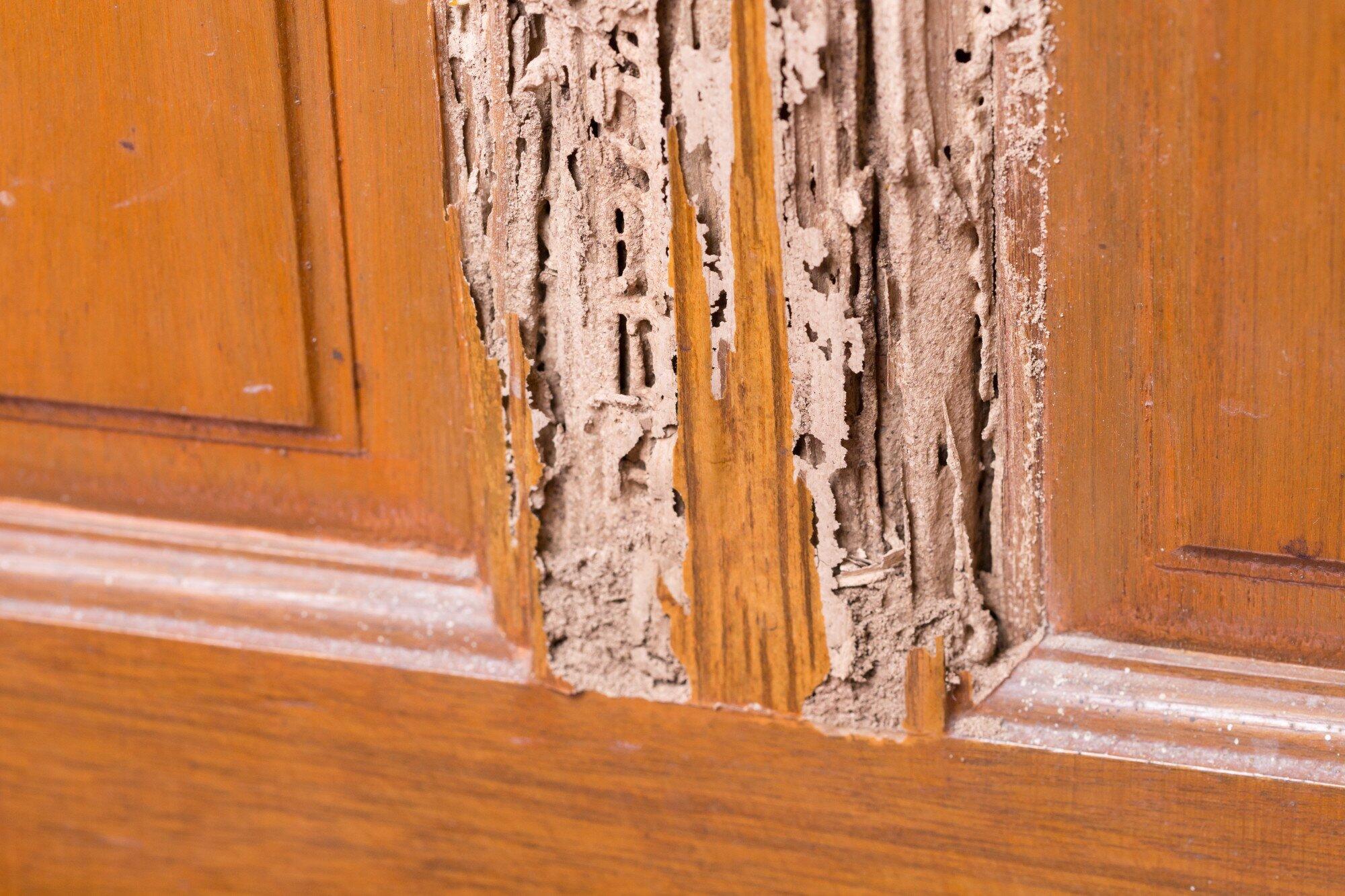
There are times when termites seem like silent destroyers. They are drawn to any wooden building they can find, from the base of your house to the books on your shelf.
It’s important for homes to know not only how termites behave but also how to stop them from reproducing. Termites are fascinating to study because of their complex social structure and scary to see how much damage they can do.
The wood house termites are the most well-known pests that damage homes. In this detailed guide, we’ll look at their lifecycle and the best ways to stop them from turning your home into their dinner.
What are Wood House Termites?
Woodhouse termites are one of the most damaging types of termites. They are also called underground termites.
They live in underground groups with up to two million members. They often come into direct conflict with people when they break into our homes because they are hungry for cellulose, which is the main ingredient in wood.
The workers perform the most visible and hazardous tasks. They dig holes in the ground and into the trees on your land, making mud tubes for safe travel and to keep the conditions they need to stay alive and moist. The troops, who have strong mouths to protect them against any threats, stand guard, and the queen quietly gives birth to a new life, keeping the colony alive.
The Lifecycle of Wood House Termites
Understanding the lifecycle of wood house termites is crucial for both prevention and intervention measures. These insects aren’t just mindless destroyers – they operate on a carefully orchestrated plan for growth and survival.
The Reproductive Cycle
There are times when the older workers and soldiers change into flying alates who are ready to leave the nest. These times are usually in the warmer spring months. These alates take a short flight, then slowly and carefully drop their wings.
They pair up and head off to find a safe place to start a new colony. Queen Alates is one of them. She looks for a good mate, gets pregnant, and then starts the cycle all over again by laying thousands of eggs that will help their country grow from the very beginning.
Growth of the Colony
The first colonies are small, with only a few termites living in them. The colony’s population can quickly grow, though, since a single queen has the amazing power to have thousands of babies. It’s hard to believe that millions of termites could move into the colony in just a couple of years and build a complex network of burrows.
Worker and Soldier Duties
Worker termites are very good at what they do. They carefully gather food, like the wood in your home, for the big colony.
The complicated design of tubes and mounds hidden inside your walls is always going. They don’t take breaks. The soldiers constantly monitor the colony, prepared to combat any threat, be it another bug or a homeowner attempting self-improvement.
Signs of Termite Infestation
By recognizing the signs of a termite infestation early on. Homeowners can save themselves the tremendous hassle and financial strain.
Wood Damage
The damage termites produce may be the most evident symptom. Check for termites in wood that sound hollow or are easy to enter. Watch for the intricate tree tunnels they dig.
Sawdust beside wooden buildings, tiny holes in the wood, and discarded wings indicate a problem. Following these signals can prevent serious harm to your building.
Termites are known to devour house-damaging materials. If you don’t stop them, the harm they create will be expensive to repair. If homeowners notice these indications, they may protect their properties against termites and prolong their lifespan.
Mud Tubes
Their ability to survive adverse settings makes termites fascinating. Wet environments are crucial to them. Mud tubes connect the deepest sections of their subterranean nests to food sources, making them vital.
These intricate tunnels help termites move across their nest. If they move around your foundation, inner walls, or roof, they’re termites.
These tubes’ complex network reveals how well the termite colony planned and collaborated. It also exhibits their adaptability and navigation skills.
Discarded Wings
When swarmers fly, they lose wings. These sections of their bodies are near vents, windowsills, and other entryways. Seeing this daily proves Alates located a decent spot to start a new colony, a crucial duty.
To commemorate their trip, they left their exquisite wings ashes. They must start with these ashes to construct a robust, growing civilization. This insect’s lack of wings suggests it may become a colony leader.
Community growth is the group’s goal. The abandoned wings remind me of natural group formation’s challenge and appeal.
Frass
In addition to eating wood, termites also produce frass from trash and decayed wood. Termites typically leave behind small piles of droppings that reveal their living and activity within a building.
A close look at these frass layers can help people find termites and figure out how bad the population is. You need to know these things to get rid of pests quickly and effectively and keep things from getting worse on the property.
Disrupting the Termite Lifecycle
Prevention is better than a cure, but sometimes infestations are already underway. Here are ways to disrupt the termite life cycle to protect your home.
Preventative Measures
If you want to keep termites away and keep your home safe, you need to stop their entry points. One important thing you can do to keep termites out of your home is to put something between the dirt and the wood.
To stop termites from getting in, keep wood piles above ground level and make sure plants don’t touch the outside of the house. Also, fix any leaks right away to help keep the area less wet.
Putting up barriers like sand and steel mesh can also help keep termites away by making it harder for them to get between the soil and wood buildings. If you follow these steps, your home will be much better protected against termite invasions.
Treatment Options for Existing Infestations
There are several ways to get rid of termites that have already moved in. You can apply chemical walls, like liquid termiticides, around the house or on the termite-infested wood. These walls scare away or poison termites when they touch or eat treated items.
Another good way to get rid of termites is to use baiting devices. We place poisoned baits in key spots to lure them back to the settlement and kill everyone there.
Also, heat treatment kills termites by making the place they are living in too hot for them to live. Treatment for a cold does the same thing, but it cools things down. They aren’t used very often, but when they are used right, they have worked in the past.
The Importance of Professional Pest Control
At first, do-it-yourself plans may look like a good way to save money. However, bear in mind that neglecting pest problems can lead to their rapid escalation. Working with a professional pest control service not only gets rid of the termites for good but also teaches you a lot about how they act and how to best treat them.
To keep their health and property safe, homes can avoid the risks that come with working with dangerous chemicals without the right training. Professional pest control services also do full checks to find weak spots in your home that you might not have seen. In every way, this stops strikes from happening again.
Choosing a Pest Control Company
It’s important not to just go with the company that gives you the lowest bid when choosing a pest control company. Do some research on the company’s name to make sure they have a history of dealing with termite problems successfully. To be sure of their knowledge in the area, look for the right licenses and qualifications.
Also, don’t be afraid to ask for references from past clients to find out more about the quality of their service. By carefully picking the right company, you can quickly and effectively deal with any termite issues you may have, making sure that the answer is safe and lasts for a long time.
You can’t say enough about how important it is to have a good pest control service. Check your home once a year and keep an eye on things all the time.
Professional pest control companies take these steps to make sure that any early signs of termite activity are quickly dealt with. This keeps your property from getting badly damaged.
Win the War Against Wood House Termites
Termites may be persistent, but homeowners can stop them from reproducing and keep these damaging bugs out of their homes if they know what to do and follow through with their plan. Watch for epidemic indications, take precautions, and don’t be hesitant to seek expert help.
As long as you follow these steps, you should be able to beat wood house termites. You can now enjoy your wooden furniture without worrying that these tiny but powerful bugs will eat it.
Did you find this article helpful? Don’t worry; we have more! Visit our site for more informational and entertaining articles that could guide you!




